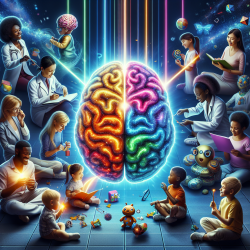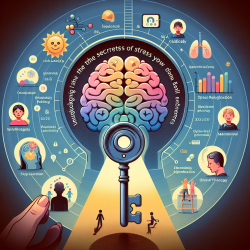Introduction
As practitioners dedicated to enhancing children's outcomes, understanding the nuanced differences in brain structures between Autism Spectrum Disorder (ASD) and Developmental Coordination Disorder (DCD) can revolutionize our therapeutic approaches. The recent study titled Specific tractography differences in autism compared to developmental coordination disorder provides groundbreaking insights into these differences, emphasizing the importance of data-driven decisions in therapy.
Key Findings from the Study
The study explored diffusion-weighted imaging to identify specific white matter tract differences among children with ASD, DCD, and typically developing (TD) peers. Key findings include:
- ASD-specific differences were observed in the mid-cingulum longitudinal and u-fibers, corpus callosum forceps minor/anterior commissure, and left middle cerebellar peduncle.
- ASD participants exhibited unique diffusivity differences in the right inferior frontal occipital/extreme capsule and genu of the corpus callosum.
- These differences correlated with emotional deficits and autism severity, highlighting the potential for targeted interventions.
Implications for Practitioners
Understanding these tractography differences is crucial for practitioners aiming to tailor interventions for children with ASD. Here are some ways to integrate these findings into practice:
- Personalized Therapy: Use insights from tractography to develop personalized therapy plans that address specific white matter abnormalities, potentially enhancing therapy outcomes.
- Focus on Emotional Deficits: Given the correlation between tract differences and emotional deficits, incorporating emotional regulation strategies could be beneficial.
- Interdisciplinary Collaboration: Collaborate with neurologists and psychologists to interpret tractography data and develop comprehensive intervention plans.
Encouraging Further Research
While this study provides valuable insights, further research is needed to explore the practical applications of these findings in therapeutic settings. Practitioners are encouraged to:
- Engage in ongoing professional development to stay updated on the latest research in neurodevelopmental disorders.
- Participate in research studies to contribute to the growing body of knowledge on ASD and DCD.
- Collaborate with research institutions to explore the application of tractography in clinical practice.
Conclusion
By understanding and applying the findings from this study, practitioners can enhance their therapeutic approaches, ultimately leading to better outcomes for children with ASD. The potential to transform therapy through data-driven decisions is immense, and continued research and collaboration will be key to unlocking these possibilities.
To read the original research paper, please follow this link: Specific tractography differences in autism compared to developmental coordination disorder.










